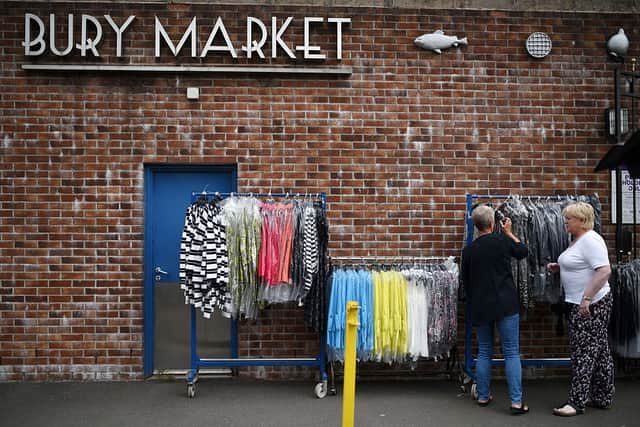People die 7 years younger on average in some wards in Bury than more affluent areas
and live on Freeview channel 276
Average life expectancy is more than SEVEN YEARS lower in certain wards of Bury than others, a report into health inequality has revealed. The gap between the ward with the highest life expectancy and the ward with the lowest life expectancy was 7.1 years for males and 7.3 years for females during the period 2016 to 2020.
The data reveals that the average life expectancy for men in Moorside ward was 73.9, the lowest in the borough, while males living in Pilkington Park can expect to live on average to 81.7 years. The biggest gap for women is between the lowest, again Moorside, with an average life expectancy of 77.7 and North Manor where the average age at death is 85.
Advertisement
Hide AdAdvertisement
Hide AdThe next lowest four wards for life expectancy in men are Bury East (74.6), Radcliffe West (75.2), Besses (76.4) and St Mary’s (76.6), while the other four highest are Ramsbottom (81.2), North Manor (81), Church (80.9) and Unsworth (80.2).
For women, the lowest five areas for life expectancy is completed by Radcliffe West (79), Bury East (79.4), Elton (80.8) and Radcliffe North (81), while the wards with the highest life expectancy are Ramsbottom (84.7), Holyrood (84.3), Church (83.6) and Radcliffe East (83.3).
The disparities were revealed in a report by Jon Hobday, the borough’s director of public health titled ‘Bury’s Approach To Addressing Health Inequalities’ which outlined ongoing and future work in Bury to reduce such inequalities.
He said: “Health inequalities are differences in health between groups of people that are avoidable and unfair and are caused by lack of access to the basic building blocks of health, such as money, housing, education, and food.
Advertisement
Hide AdAdvertisement
Hide Ad

“This means people are dying years early and spending more of their lives ill. Because of this tackling health inequalities needs the whole system to act.”
Addressing the gap in life expectancy detailed above he said the difference is caused by ‘higher rates of death from several major killers in more deprived areas including heart disease, stroke cancers, liver disease, and in 2020 and 21, Covid-19’.
He added: “There are also stark inequalities in illness and disability across Bury. “Inequalities in work-limiting illness and disability are especially pernicious because they limit employment, and through that access to building blocks of health like money, housing and quality food.
“The major causes of illness and disability in Bury are low back pain and musculoskeletal conditions, migraines, mental illness particularly anxiety and depression, and diabetes. “This hurts individuals, households, and communities. It is also a barrier to economic growth.”
Advertisement
Hide AdAdvertisement
Hide AdThe report includes what measures the authority is using to narrow inequalities. This includes a re-worked Joint Strategic Needs Assessment providing a thorough overview of population health in Bury, including inequalities in health.
Mr Hobday, said: “We need a strategic framework that can accommodate the wide range of responses to health inequalities, from improving access to quality healthcare to addressing poverty and inequality.
“We are using the Greater Manchester Population Health System Framework, which was adapted from the King’s Fund’s ‘vision for population health’.
“Given the breadth of the challenge, there is a wide range of work already ongoing to reduce health inequalities in Bury.”
Comment Guidelines
National World encourages reader discussion on our stories. User feedback, insights and back-and-forth exchanges add a rich layer of context to reporting. Please review our Community Guidelines before commenting.